I was looking at some drawings traced from the rocks at some Patagonian rock art sites in Comallo, Río Negro province, Argentina, published in a book by Teresa Boschin [1], and was surprised by the “ape-like” appearance of the “men” and the strange shapes of their clothing (?) or bodies (?). (see image below). Could they be
Neandertals or
Homo erectus?
Intrigued, I read on, and got to the interpretation given by Boschin. The outcome is this post, which does not deal with primitive hominids but with some strange rock art and stone implements found in Patagonia.
Images traced from the Comallo rock shelters. From [1].
The strange men drawn at Comallo
The first thing that drew my attention were the ears, round, bear-like, mouse-like or even monkey-like (as can be seen in the top row of the drawing above –excluding fig. 185- , and in the second row in fig. 177, as well as fig. 242 in the third row).
The second thing were the “pot bellies” as can be seen again, in all figures of the first row, and, again, excluding the odd drawing depicted in fig. 185. In the second row it appears in figs. 177, 184 and 200 and again in fig. 241 in the third row.
What could they be? Pregnant women? Pot-bellied men? Persons wearing a blanket wrapped around their waist? What are these strange shapes?
Teresa Boschin, the author interprets them as follows:
- Figures 200 (row 2) and 241 (row 3) carry an “ax” (the double triangle shaped thing across their chests –more on this below.
- Seven of these figures are “examples of regional micro-identities” (meaning perhaps local dress or body paintings that are distinct from other regions) and these are all the figures that I noticed had the strange ears!, they are not ears but, according to Boschin some kind of earrings. Fig. 75 on the last row has a chest armour and a Tembetá or “lip plate”, to stretch the lower lip outwards
- Fifteen of them have a clear identification of their gender (look between their legs).
- Several have symbols that identify their “clans”: three toes of fingers (the Rhea or South American ostrich clan), snake, step-shaped garments and tatoo designs (figs 176 and 241). A head-dress with feathers (see bottom row figs. 108, 110), two leather capes (fig. 232 row three). Boleadoras (fig. 161 and 176 on the top row and fig. 75 on the bottom row) – the two pink or red round shaped things around the person’s waist). A combat armour and a cape (fig. 107 and 108, last row), and a one-armed person (fig. 161 top row).
My comments on Boschin’s interpretation
Boleadoras: The name boleadora derives from the Spanish word ‘bola’ (ball); they were stones balls sheathed with leather and attached to strong tendon straps that were whirled above the head of the hunter to gain momentum and then thrown so as to entangle around the hunted animal’s legs.
The problem is the size: the ´bolas’ were not as big as shown in the rock art. Even the largest stones were not bigger than a tennis ball. They were worn hanging from the waist, and in most photographs and engravings showing Tehuelche natives you never see the boleadoras. However, I did find one which shows a native riding a horse with his bolas strung around the waist as can be seen below (engraving from George Muster’s ride along Patagonia in 1870): [2]
Patagonian hunting, notice the boleadoras in his hand and slung on his waist.
Regarding earrings, in all the images (photos, paintings, etc) that I have seen, not one single Patagonian native man is shown wearing earrings of any kind. Women seldom appear wearing earrings, and if they do, they are tiny.
As an example, below is a photograph of a Tehuelche native Casimiro Biguá and his male relatives, at Carmen de Patagones fort in 1865. Notice: no earrings or boleadoras:
Casimiro Biguá and relatives, Patagones in 1865. No earrings or boleadoras.
The Axes
Boschin associates this rock art with Elumgássum, which she says is the mythical creator of the Tehuelche people. She points out that this particular rock art at Comallo introduces some stylistic changes: “that prioritize Elumgássum displaying a variety and quantity of axes...”[1]
For more on this Patagonian monster, see our posts on Elumgássum or Ellengassen.
Regarding the Axes, I have posted about Ellengassen’s hand ax postulating that it is the hand ax of some primitive hominid.
But this time I decided to take a deeper look into the matter and the odd shaped axes that Boschin mentions.
Looking at the rock art drawings, you will notice the ones she says carry an ax across their chests, it is a figure which she describes as follows “Chelelon are two triangles linked at the vertex [1] Surprisingly she does not go into the etimology of the word “Chelelon”, which I did, and found quite enlightening, but first lets look into these “double headed axes”.
The Minoan connection
The Palace of Knossos lies on the island of Crete, on the Eastern tip of the Mediterranean Sea. This complex at Knossos was built around 1,900 BC and was permanently occupied until around 1,200 BC when the site was destroyed by fire.
In one of the Palace’s rooms, an image of a double headed ax is cruedely engraved on the walls of the light well at the west end. The room received its current name as "The Hall of the Double Axes" due to this symbol. [3]
This is not at all strange since the Labyris or double headed ax was a very important symbol in the Minoan religion (something akin to the cross for Chrisitanity). [4] In Crete it was carved, painted, engraved and depicted in ceramics, frescoes and even cast in metal.
Labyris or double ax
The Labyris is a very ancient symbol (the word is of Lydian origin), and found in many places around in Europe and the Middle East:
- Baring and Cashford describe it at the Paleolithic cave at Niaux, in Southeastern France [6]
- E. O. James dates it as a religious symbol from the Fifth millenia BC and M. Eliade has the ax as part of religious rites at Tell Arpachiyah (of the Assyrian Tell Halaf culture), where it was found close to a naked goddess. In other parts of the Middle East it is a symbol of the “Mother Goddess” [7]
- A Summerian text of the Third millennium BC mentions a sacred wedding which included the “Double headed ax ...” [8]
- Even Afrodite (heir of the Cretan Mother Goddess) appears with the double ax symbol in the Afrodisia coinage [9]
Apparently the word for Labyrinth -the home of mythical Minotaur- derives from the word for double ax (Labyris) and meant “Home of the Double Ax”.
Its meaning
What does the double ax symbolize? Archaeologist Marija Gimbutas believed that the symbol predated metal axes by several millenia and that it represented a stylized Goddess of regeneration and death, with a hourglass shaped body and which was symbolized with a butterfly (because the various stages of its life cycle represent the cycle of life, death and rebirth).[5]
In my opinion Gimbutas seems to have been right (More on butterflies towards the end of this post). However, axes can be fashioned in stone, as we will see was the Patagonian case.
Furthermore the word labrys may derive from labia (with evident sexual and fecundity – Mother Goddess connotations).[5] Interstingly the double ax is depicted as held by women. It is never depicted as held by men. And, as an example of this: the Greeks would have Hercules steal Hyppolite's labryis, she was the queen of the Amazons.
Could Comallo cave rock art depict women? Hence the earrings?
Others interpret the symbol differently: Sir Arthur John Evans (1851 – 1941) the archaeologist who discovered the Palace of Knossos believed that the figure was a symbol of the union of complementary principles: the femenine and the masculine. Yet another interpretation is that it is the ax with which the Cretan bulls were sacrificed.
The Patagonian double headed axes
This takes us back to Boschin and her Labyris shaped axes. There are quite a few examples of these axes in Argentine museums. They are all fashioned in stone (well, the native Tehuelche did not work metals, so they had to use stone):
Some stone axes found at different sites of Patagonia and Northern Argentina. From [10].
In 1903 Juan Ambrosetti wrote a paper about these “Great Patagonian Ceremonial Axes”, and mentions that some were found in burial cairns along the Chubut River valley, and one was found at Punta Ninfas, Chubut, on the sea coast. All of them in Patagonia. On average they were 30 cm (one foot) long and a few centimeters thick (less than 1 inch).
He also mentions one tiny 8.5 cm (3.3 in.) ax that was given to him in Northwestern Argentina, at Molinos, Salta province (see above on the right). This is interesting since it may point at some type of cultural or religious influence that spanned the Andean and Patagonian part of America.
Most were carved out of basaltic rock (lava is quite frequent in Patagonia), and some were cracked in half at their narrowest part, due to manhandling when being dug out of the cairns.
Below is another of these axes, which belonged to a Tehuelche Chief named Foyel.
Foyel’s ax, From: [11]
It was given by Foyel to an Argentine General, Liborio Bernal as a peace token, when the native troops he commanded surrendered to the Argentine authorities in 1883. It remained in the General’s family until his great grandchildren donated it to the Emma Nozzi Museum of Carmen de Patagones in 2009. The basaltic rock ax still is about 20 cm ling has some red paint marks on it. It symbolized Foyel’s authority (like a crown or a sceptre symbolize royal authority in Europe).[11]
More axes can be seen below, (A) is similar to the one shown above and is from the Gaiman Museum, Chubut. The ones shown in (B) are from Leleque’s Museum (Chubut), these two axes are “squarer”. And, from the Bariloche Museum, Río Negro we can see the common every-day ax, used for chopping, which has a more practical ax-like shape (C), and is therefore totally different to the “Ceremonial axes”.
Some more Patagonian axes.
The paintings: Rock Art
This symbol (the triangles linked at their vertexes) also appears in rock art, clearly depicted on their own, and not stuck on the chests of people as in Boschin’s Comallo cave paintings.
Hourglass shaped painting, in red, at the Alerces National Park, Chubut.
Curtoni [12] who analysed the different symbols painted across Patagonia, calls it a Clepsydra, or water clock (maybe meaning an hourglass, due to its shape, which would be a sand clock not a water one). In any case he finds it depicted in paintings in the provinces of Buenos Aires (Tandilia and Ventania sites), La Pampa, Neuquén, Mendoza and San Luis, which was the area where the Northern Patagonian Tehuelches lived until the arrival of the Spaniards.
Its symbolic value is powerful since it also appears on other artifacts, not only painted on rocks [12]:
Notice the engraved shapes on the upper part of the object. From [12]
A Universal symbol
However the hourglass symbol is quite common, and it appears in rock art around the world. Some examples below:
Navajo Petroglyphs in New Mexico, USA [14]
Tuareg art in Northern Africa, Sahara.
It maybe meant different things to different people. It is a simple symbol, easy to draw. Rock art depictions can be interpreted to mean anything (like Boschin construing axes out of triangular shaped drawings).
But let’s get back to the stone axes:
Double cups
An interesting blog [13] by Gustavo Rubino Begner on Patagonian geoglyphs mentions a “Double Cup” which he says “is a symbol of being able to receive and keep the energy generated by the ceremony, and, if double amplifies it”.
Since the original text is in Spanish, I will quote in full:
Focusing on the central space that the overlapping and intersections create, we obtain an image which is similar to a double cup
also called "ambilateral".
The same shape can be found in the rock art and petroglyphs in Patagonia, sometimes more or less outlined, to the point that it is drawn with straight lines.
It is compared to the shape of a sand clock or a (number) eight.
In Chubut several cups of this type have been found, generally of stone.
The ritual cup symbolizes the power to receive and contain the energy that is generated within the ceremony. If it is double, there is an amplification in two dimensions or directions, external and internal
Indepentendly of Gustavo Rubin Begner's interpretation, I am not sure what these "cups" are, I am currently researching on them.
As you can see, they are quite different from the axes which are basically "flat", the "cups" look like two cones joined at their apex. Since they seem quite shallow it is unlikely that they served as drinking cups. What can they be?
“Double Cups” and an ax. See details below: Top and Right images are from [13]
The upper left image is a double-cup found on the Senguerr River, Chubut, Patagonia. On the Right, Double Cups also from Chubut. The lower left image is a decorated ceremonial ax printed on an Argentine stamp [15].
Chelelon or the opposed triangles are actually Butterflies
So now we go all the way back to the beginning of this post, where Boschin calls these axes by their native name “Chelelon” but did not say what it meant.
She shows how they could be combined and repeatedly superimposed:
Combined Chelelons at Loncoman site. From [1]
This image is important: those are not axes stacked one upon the other, they are something totally different: butterflies. I have seen butterflies gathered in a humid shady spot, they are symbols of fertility, spring, balmy weather and as can be seen below, can pile up together:
Butterflies grouped together. Photo: A. Whittall. Copyright © 2013 by Austin Whittall
In fact, that is what the word Chelelon means! [16] in Tehuelche language: Butterfly. Not triangle or Ax, just butterfly:
Entry for Chelelon in the Tehuelche Dictionary [16]
A Patagonian historian, Mario Echeverría Baleta describes the painted capes crafted by the Tehuelche natives or Kai Ajnun. They were made out of Guanaco Lama guanicoe hides (they were the staple food of the Tehuelche, who used their hides for clothing and building the tents in which they lived in).
The native Tehuelche wore their hides with the fur towards the inside to keep warm and also to keeping burrs and branches from sticking to the hairs, the bare leather was tanned and painted with different motifs, such as the Chelelon, one of which is shown below.[17] Echeverría Baleta also states that they represent butterfly wings:
Chelelon motif, from [17].
Closing comments
The hourglass paintings on the guanaco capes and on the cave walls are butterflies not axes. They may symbolize family clans or even fertility. More research needed.
Humans have a limited repertoire of images and symbols (stars, crosses, dots and... hourglass shapes), and repeat them across space and time. The meanings are surely different, the symbol is the same one.
We could argue that the Cretan sailors reached Patagonia and smelted tin or copper and took it back to Crete in ingots shaped as Labyris, and that the Tehuelche natives imitated them and fashioned their own stone axes. Or that they saw the powerful religious connotations of the Cretan Labyris and adopted it as their own. But that is probably unlikely.
By the way there are many coincidences between Patagonian and Cretan myths.
They did make stone axes with two heads, and that is interesting and worth investigating. Why a double headed axe?
Then there are the “Double cups” which in my opinion are not cups and have no relation with the axes or the hourglass “Chelelon”
Sources
[1] María Teresa Boschin, 2009. Tierra de hechiceros arte indígena de Patagonia septentrional Argentina, Univ. De Salamanca.
[2] Musters, G., (2007). Vida entre los Patagones: un ano de excursiones desde el estrecho de Magallanes hasta el rio Negro: 1869-1870. B. Aires: Continente-Pax.
[3] Knossos Palace
[4] Symbols of the Minoan Goddess Religion
[5]Vicki Noble,
The Double Goddess: Women Sharing Power.
[6] A.Baring & J.Cashford, 2005.
El mito de la Diosa, Ed. Siruela. pp. 140
[7] E. O. James,
Antichi dei mediterranei, Ed. EST, pp. 167
Mircea Eliade, 2006,
Storia delle credenze e delle idee Religiose. Ed. BUR, pp. 152.
[8] Daniel Reisman, 1973, Iddin-Dagan's Sacred Marriage. Journal of Cuneiform Studies, Vol. 25, N. 4, 1973: 187
[9] Paule Faure, Fonctions des cavernes crétoises pp. 157
10] Ambrosetti, Juan B.,1903, Arqueología Argentina. - Las grandes hachas ceremoniales de Patagonia ( probablemente Pillan Tokis). 10 de Marzo de 1903. Anales Del Museo Nacional de Buenos Aires. Vol. ser 3 Tom.2.
[11] Julio Esteban Vezub , La vida social de las cosas y los artefactos-documentos del Museo de Carmen de Patagones CORPUS - Archivos virtuales de la alteridad americana http://ppct.caicyt.gov.ar/index.php/corpus/article/view/1438/1440
[12] Rafael Pedro Curtoni , 2006 Expresiones Simbólicas, Cosmovisión y Territorialidad en los Cazadores Recolectores Pampanos. Relaciones de la Sociedad Argentina de Antropología XXXI, Buenos Aires. pp133
[13] Geoglifosenlapatagoia.blogspot by Gustavo Rubino Begner
[14] Alex Patterson (Comp.), 1992.
A Field Guide to Rock Art Symbols of the Greater Southwest , Big Earth Publishing.
[15] Díaz, José Fernández , 1984. Catálogo 2a exp Las Culturas de América en la Época del descubrimiento. 137pp. Madrid
[16] Ramon Lista, 1894, Los Indios Tehuelches, Una Raza Que Desaparece
[17] Mario Echeverría Baleta, Kai Ajnun - El milenario arte tehuelche de los quillangos pintados
Patagonian Monsters -
Cryptozoology, Myths & legends in Patagonia
Copyright 2009-2013 by Austin Whittall ©

















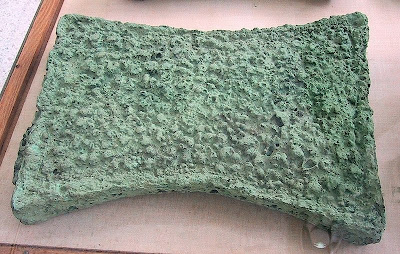









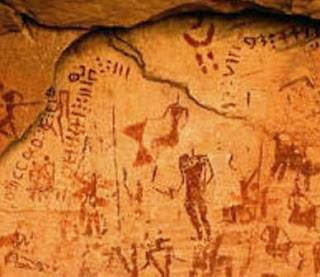


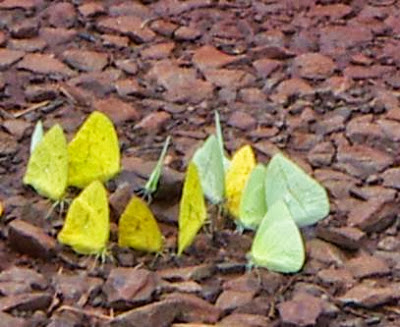









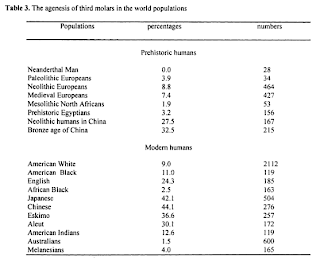





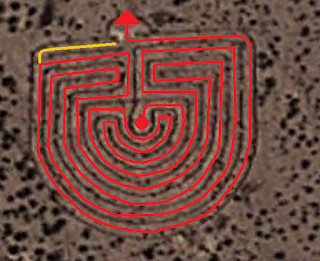













 />
/>